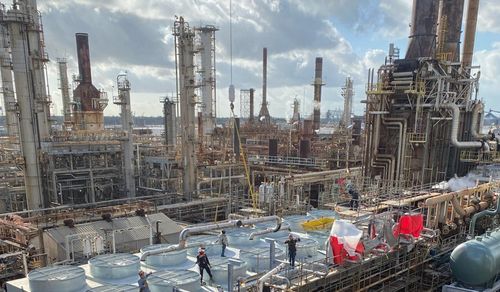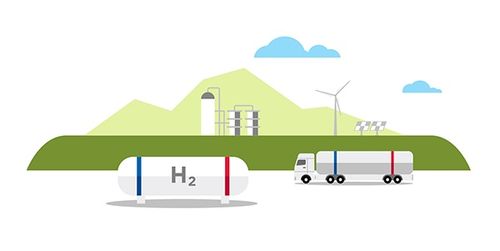Intersect Power, a solar developer that completed a $750m capital raise last year, is developing four large-scale green hydrogen projects that could eventually be spun off into a separate company, CEO Sheldon Kimber said in an interview.
Four regional complexes of 1 GW or more, co-located with renewables, are in development, he said. The first phases of those, totaling several hundred megawatts, will come online between 2026 and 2028.
Initial offtake markets include transportation, sustainable aviation fuel, and hydrogen for industrial use, Kimber said. Ultimately Intersect is aiming to serve ammonia exporters in the US Gulf Coast, particularly those exporting to Japan, Kimber said, adding that the company could contract with ammonia producers. He recently wrapped up a nine-day, fact-finding trip to Japan to better understand what he believes will be the end market for Intersect’s green ammonia.
“If you don’t know who your customer’s customer is, you’re going to get a bad deal,” Kimber said.
Intersects projects under development involve behind-the-meter electrolysis, co-located with Intersect’s wind and solar generation plants. In 2021 the company signed an MOU with electrolyzer manufacturer Electric Hydrogen. The contract is for 3 GW.
Intersect controls the land and is in the process of permitting the four projects, located in Texas, California and another western US location that Kimber declined to name. The primary focus now is commercial development of the offtake and transportation, he said.
‘Boatload of equity’
Kimber said the company will be ready to announced details of the projects when they are ready to seek financing. He estimates that upwards of $12bn will need to be raised for the package of complexes.
“There’s going to be an enormous need for capital,” Kimber said. Debt will make up between 60% and 90% of the raising, along with “a boatload of equity,” he said. Existing investors will likely participate, but as the numbers get bigger new investors will be brought on board.
Intersect has worked with BofA Securities and Morgan Stanley on past capital raise processes, and also has strong relationships with MUFG and Santander.
Moving forward the company could have a broader need for advisory services and could lend knowledge of the sector in an advisory capacity itself, Kimber said.
“The scope and scale of what we’re doing is big enough and the innovative aspect of what we’re doing is advanced enough that I think we have a lot we can bring to these early-stage financings,” Kimber said. “I think we’re going to be a good partner for advisory shops.”
In the short term Intersect has sufficient equity from its investors and is capitalized for the next 18-to-24 months, Kimber said. Last summer the company announced a $750m raise from TPG Rise Climate, CAI Investments and Trilantic Energy Partners North America.
“People don’t want to pay ahead for the growth in fuels,” Kimber said, adding that reaching commercial milestones will build a compelling valuation.
Intersect could spin off its hydrogen developments to capitalize them apart from renewables, Kimber said.
“Every single company in this space is looking at that,” he said. “Do you independently finance your fuels business?”
Avoiding the hype
Right now the opportunity to participate in hydrogen is blurry because there is so much hype following passage of the IRA, Kimber said. Prospective investors should be focused on picking the right partners.
“What you’re seeing right now is everybody believing the best thing for them,” Kimber said, noting that his company has decided to keep relatively quiet about its activities in the clean fuels space to avoid getting caught up in hype. “The IRA happened, and every electrolyzer company raised their prices by fifty percent.”
Of those companies that have announced hydrogen projects in North America, Kimber said he believes only a handful will be successful. Those companies that have successfully developed renewables projects of more than 500 MW are good candidates, as are companies that have managed to keep a fluid supply chain with equipment secured for the next five years.
“That is a very short list,” he said.
Lenders on the debt side will want to start determining how projects will get financed, and which projects to finance, in the next 18 months, Kimber said.
Finding those who have been innovating on the front-end for years and not just jumped in recently is a good start, Kimber said.
“Hydrogen will happen, make no mistake,” Kimber said. He pointed to the recent European directive that 45% of hydrogen on the continent be green by 2030 and Japan’s upcoming directive to potential similar effect. Once good projects reach critical points in their development they will start to trade, probably in late 2024, he said.







